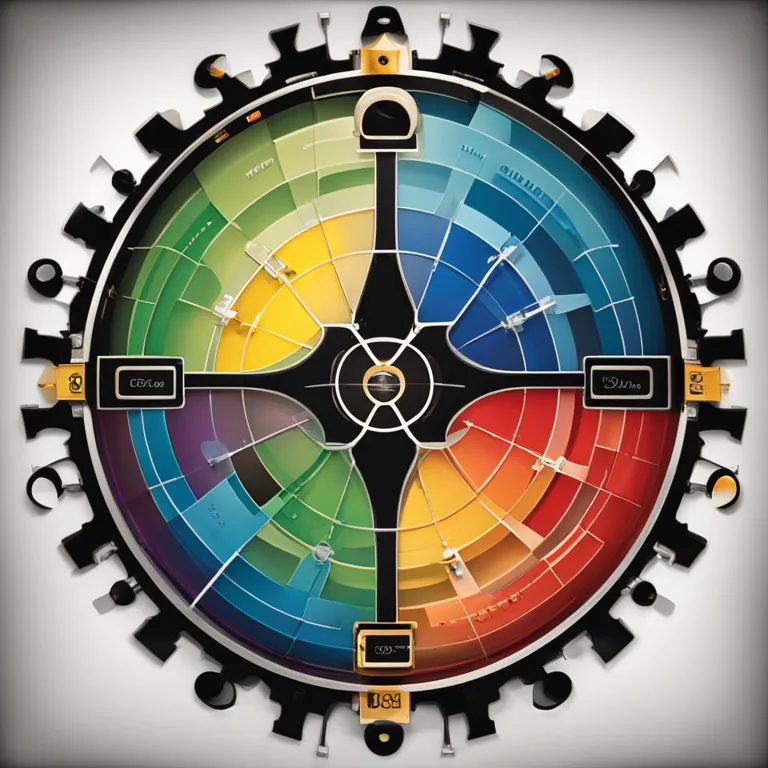
Biorhythms and Their Influence in Psychology
The integration of biorhythms in psychological practices -- examining the cycles that dictate our mental, physical, and emotional health.
article by Adrian Wallace
The Basis of Biorhythms in Psychological Theory
Understanding biorhythms is essential when delving into the aspects of psychological well-being. The term ‘biorhythm’ stems from the Greek words ‘bios’ (life) and ‘rhythmos’ (rhythm), which together encapsulate the cyclic patterns through which physical, emotional, and intellectual capacities fluctuate. Many psychologists and researchers have studied these cycles, aiming to identify patterns that could predict personal effectiveness and emotional states. The concept posits that by studying these rhythms, one could potentially forecast the best times for critical decision-making, relationship building, and other life events.

Physical, Emotional, and Intellectual Cycles
Biorhythms are traditionally broken down into three primary cycles: the physical, emotional, and intellectual. Each operates on a different time cycle, typically 23 days for the physical, 28 days for the emotional, and 33 days for the intellectual cycle. Adherents of biorhythm theory suggest that by being aware of these cycles, individuals can engage in activities that are harmonious with their current biorhythmic phase, thus enhancing performance, mood, and cognitive functions—effects that extend toward both personal development and professional achievements.

Application in Modern Therapy and Counseling
The application of biorhythms in psychology has seen varied interpretations, with some psychotherapists integrating it into their practice. They may use biorhythmic charts to aid in therapy sessions, potentially tailoring treatment plans around a patient's cycles. Strategies include timing interventions such as Cognitive Behavioral Therapy (CBT) sessions to coincide with positive phases in a patient's biorhythms, or helping individuals prepare for the negative phases by building resilience and coping mechanisms.

Criticism and Contested Validity
Not without its skeptics, the concept of biorhythms faced criticism from a portion of the scientific community that views it as lacking empirical support. Critics contend that biorhythmic patterns lack consistency when subjected to rigorous scientific testing. Despite this, the interest in biorhythms persists, supported by anecdotal evidence and the testimonies of individuals who claim to have benefited from being attuned to their personal cycles. Psychological discussions surrounding biorhythms often revolve around the inconsistencies in research findings and the challenges of measuring these cycles reliably.

Integrating Technology for Biorhythm Tracking
With the advancement in technology, particularly in the field of wearable tech, tracking biorhythms has become more accessible. Individuals can now monitor their physical and cognitive states with greater ease, using smartwatches and apps that analyze sleep patterns, heart rate variability, and mental acuity. This tech-based approach has provided a modern twist to biorhythm theory, allowing for real-time tracking that can inform users of potential downturns or peak performance phases in their psychological state.
Biorhythm Theory in Personal Development
The interest in personal development has breathed new life into the application of biorhythms in psychology. Self-help gurus and life coaches often incorporate biorhythmic awareness into their programs, advocating for mindfulness about one's physiological and psychological cycles. Though it may not be mainstream psychology, the theory's influence on forming habits, setting goals, and personal timing for decision-making continues to fascinate a subset of individuals intent on maximizing their potential based on their unique physiological rhythms.
Published: 12/28/2023
Modified: 12/28/2023
More predictions
Come back here soon to learn more about yourself and your future


Unlocking Biorhythm Calculations
Learn the ins and outs of measuring your biorhythms to align with your natural energy cycles for enhanced well-being and decision-making.


The Synergy of Cycles: Biorhythm Compatibility
Discover the secrets of biorhythm compatibility and how it might influence personal connections in our comprehensive guide.


Biorhythm: The Significance of Compatibility
Discover the significance of biorhythm compatibility in relationships and how syncing life cycles can impact partnership dynamics.